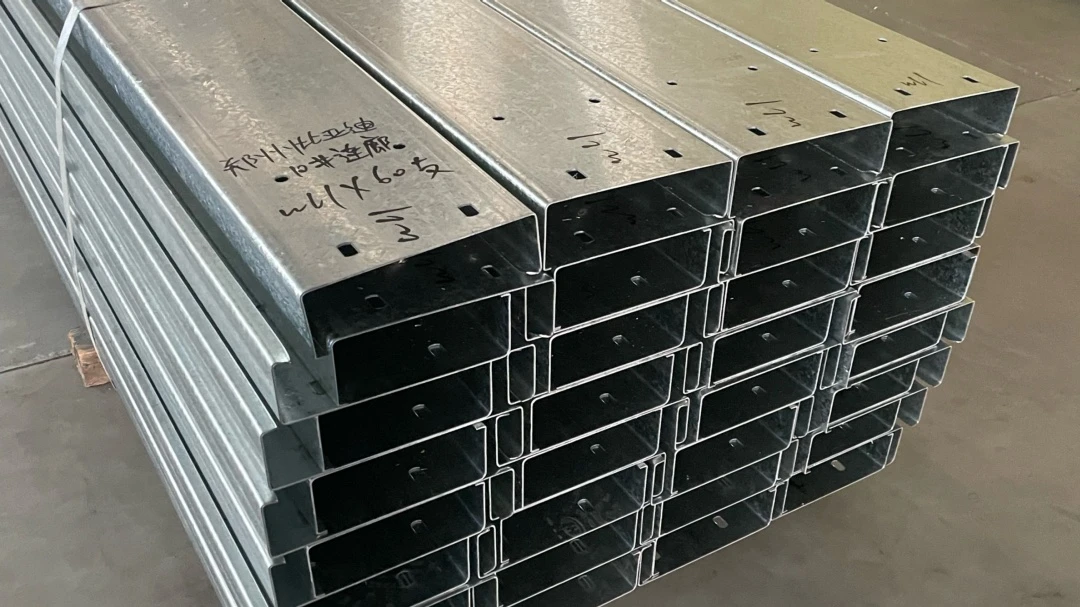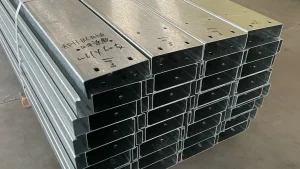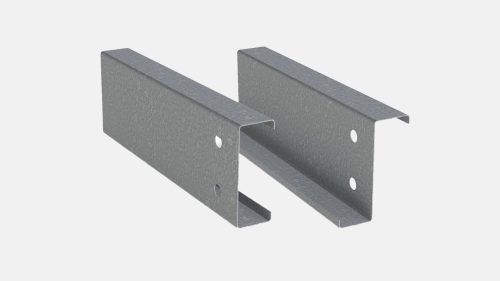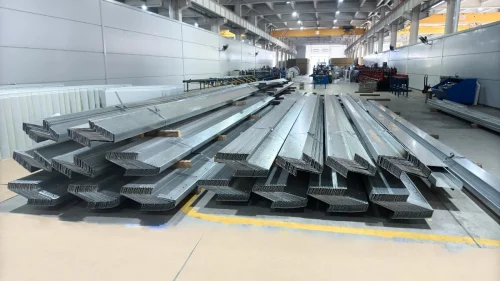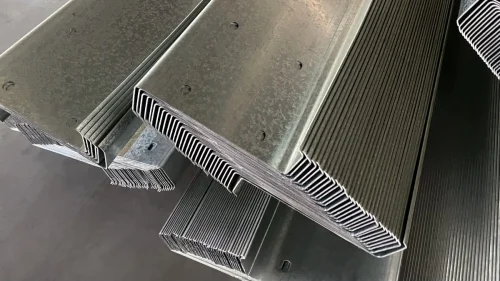Cold-rolled C Purlin
A cold-rolled C purlin is a secondary structural member with a “C”-shaped cross-section, commonly used to support roof and wall cladding in steel buildings.
They are produced by cold roll-forming galvanized steel coils at room temperature, which increases steel strength while maintaining precise dimensional accuracy.
C purlins are simple, economical, and widely used where single-span or non-overlapping applications are suitable.
Key Features
-
C-shape profile: Flat back with two parallel flanges and small lips for extra stiffness.
-
Lightweight but strong: Reduces dead load on the main frame.
-
High precision: Consistent dimensions due to cold-formed manufacturing.
-
Corrosion resistance: Hot-dip galvanized surface for long service life.
Common Specifications
-
Material:
-
Galvanized steel coil (ASTM A653, Q235, Q355, S350GD, etc.)
-
Yield strength: 250–550 MPa
-
-
Dimensions:
-
Depth (web height): 80–300 mm
-
Flange width: 40–80 mm
-
Lip size: 15–25 mm
-
Thickness: 1.5–3.0 mm
-
-
Length:
-
Cut to project requirements, usually up to 12 meters per piece.
-
-
Coating:
-
Zinc coating: Z180, Z275, or higher for corrosive environments.
-
Optional pre-painted or powder-coated finish.
-
Advantages
-
Economical: Lower cost compared to hot-rolled sections and heavier profiles.
-
Ease of Handling: Lightweight for faster transport and installation.
-
Versatility: Suitable for both roof and wall structures.
-
Pre-punched holes: Available for bolted connections, saving on-site work.
-
Durable: Galvanized finish ensures long-term protection.
Applications
-
Roof purlins: Supporting corrugated or sandwich panel roofing.
-
Wall girts: Holding vertical or horizontal wall cladding.
-
Floor joists: In light steel flooring systems.
-
Framing for sheds, canopies, garages, warehouses.
Installation Notes
-
Span type: Typically used for single spans, but can be used in lapped or back-to-back arrangements for higher loads.
-
Spacing: Commonly 1.0–1.8 m between centers, depending on design load and panel type.
-
Connections: Usually bolted to cleats welded on rafters or columns.
-
Bracing: May require sag rods, bridging, or strap bracing for stability.
C Purlin vs. Z Purlin
|
Feature |
C Purlin |
Z Purlin |
|---|---|---|
|
Overlap |
Not ideal for overlapping |
Designed for overlapping |
|
Strength in Continuous Spans |
Lower |
Higher |
|
Best Use |
Single-span applications |
Continuous-span applications |
|
Installation |
Simpler |
More complex due to overlaps |
C Purlin
Z Purlin

Features And Benefits
OHC Steel Structure supplies cold-formed purlins and girts. The decision on which structural members to use will be based on the economy of each member, the roof and wall systems used, the product application, or by customer choice at the time of order entry.


